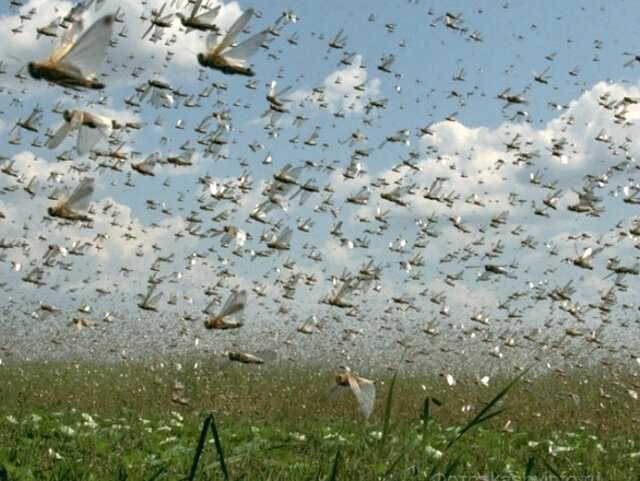As of June 10, 2022, the spread of locusts was detected in Uzbekistan on a total area of 292 600 ha, of which chemical treatment was carried out on 284 000 ha, EastFruit experts report.
These data were announced at a special briefing by the head of the information service of the Agency for Plant Protection and Quarantine of Uzbekistan.
To date, chemical treatment has been carried out in Kashkadarya, Surkhandarya, Jizzakh, Samarkand, Navoi, Syrdarya, Bukhara, Andijan, Khorezm, Namangan, Fergana regions and the Republic of Karakalpakstan. The largest areas subject to chemical treatment against locusts were Kashkadarya, Surkhandarya, Jizzakh regions and the Republic of Karakalpakstan.
Chemical treatment on more than 580 300 ha where the pest can spread is scheduled in 2022 in the country.
It was also noted at the briefing that there is a risk of locusts arriving from neighboring countries. Given this circumstance, joint monitoring was carried out in the border areas with the quarantine services of Kazakhstan (May 26-27, 2022) and Tajikistan (from March 28 to April 2, 2022). As stated at the briefing, the situation in the border areas is under control.
Locusts pose a serious threat to agriculture in Central Asia and the Caucasus. There are three main locust pest species: the Italian Locust (CIT), the Moroccan Locust (DMA) and the Asian Migratory Locust (LMI). These voracious insects threaten food security of the countries of these regions.
Besides the COVID-19 pandemic and quarantine restrictions, the countries of Central Asia also faced a large-scale invasion of locusts in 2020. It was the largest pest outbreak recorded in the past two decades. In July 2020, the Government of Japan and the Food and Agriculture Organization of the United Nations (FAO) decided to donate $7.25 million as part of the second project to improve locust management in Central Asia. To reduce the damage caused by locusts, Uzbekistan then planned to create a system of transboundary cooperation in six countries, including Kazakhstan and Turkmenistan.
The use of the site materials is free if there is a direct and open for search engines hyperlink to a specific publication of the East-Fruit.com website.




